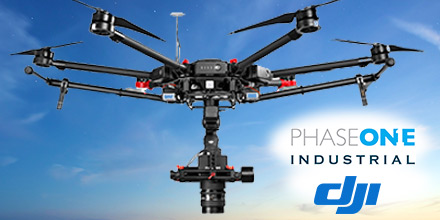
Recently, Phase One Industrial announced full integration of its iXU and iXU-RS aerial cameras with DJI’s M600 and M600 Pro drones.
Phase One Industrial was the first to deliver 100-megapixel medium format aerial cameras.
Built using DJI’s SDK, this is the latest drone platform supported by Phase One Industrial.
From photogrammetry to critical infrastructure monitoring, Phase One continues to innovate inspection tools capable of addressing diverse aerial imaging applications.
DJI M600 and M600 Pro Integration
The integration with DJI’s M600 and M600 Pro platforms is already delivering high quality results.
“The Phase One Industrial IXU camera with the DJI M600 drone, delivered extraordinary results,” said UAV Flight Systems Manager Tobias Wentzler, Lufthansa Aerial Services. “We achieved millimeter per pixel accuracy. This allowed us to inspect in exquisite detail and lift our mission results and accuracy to a new, high-end level. We identified the subtlest cracks or imperfections that were not visible to conventional inspection methods.”
Phase One Industrial’s continuous efforts to identify and develop aerial imaging solutions meet the exacting needs of aerial imaging professionals in diverse markets.
“When our clients hire us, they expect the best,” said Ron Chapple, CEO of Aerial Filmworks. “With the new Phase One Industrial aerial cameras integrated with DJI drones, Aerial Filmworks can deliver the robust performance, highest resolution and finest image quality to support our clients’ cinematic projects.
“GEO1, the survey division of Aerial Filmworks, a solutions-driven provider in the electric and gas/oil marketplace, also benefits from this development. Now, we have the right solution to help satisfy our clients’ requirements for the high resolution data and flight efficiencies.”
Phase One Aerial Camera Integration
Phase One Industrial iXU and iXU-RS aerial cameras’ integration with DJI M600 and M600 Pro drone systems include:
- 100MP and 50MP metric aerial cameras
- Smart triggering of the camera by waypoints / fixed distance / fixed time
- Support for mission planning applications (such as DJI Ground Station pro) – for waypoints missions
- Geo-tagging of all files’ location and gimbal position
- Dual remote controllers (drone and camera) enable each operator (UAV pilot and camera operator) to focus on their respective mission goals
- Industrial-grade build of the camera and aerial lenses, all of which are designed specifically for tough use in harsh environments.
The integration also provides a new iX Capture Mobile application for iOS, featuring an intuitive, user-friendly interface, and support for total remote control of the camera.
iX Capture Mobile was designed using the DJI open platform development tools, and offers various operating modes, including:
- Video Streaming
- Auto or Manual Capture settings to determine the values of the ISO, shutter speed and aperture
- Auto capture mode to enable image capturing by waypoints, fix distance or by time intervals
- Camera control via DJI Lightbridge 2 dials.
Aerial Camera Specs
Phase One Industrial’s iXU and iXU-RS series of high-resolution, metric cameras are known for their precision imaging (offering sensor resolution from 50 to 100 megapixels), small size and low weight (from 1.25 kg). These industrial-grade cameras offer direct integration with many other UAV manufacturers. In addition, they support the workflows of many leading image post processing software, such as Pix4D, Agisoft, SimActive, and others.
Designed to capture images with superior accuracy and quality, Phase One Industrial aerial cameras cover larger aerial surfaces in less time. This means less flight time needed for efficient flying.
Operators can enjoy both unprecedented visibility and a lower cost by utilizing drones rather than traditional airplane or helicopter methods. In addition, using drones offers improved worker safety across many dynamic and challenging environments. Such environments, include: power line monitoring, inspection of wind turbines, railways, roads, bridges and other civil engineering jobs.
Pricing and Availability
Phase One iXU and iXU-RS series camera systems, now with full support for DJI M600 and M600 Pro drones, are now available. Camera package prices begin from $29,000 (complete with integration kit and lens). For more information,
please contact us.
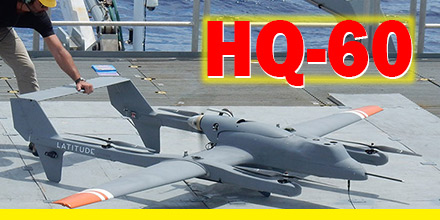 We know more about the universe than we do about the oceans.
As such, it is no surprise that researchers are looking for new ways to understand the ocean.
Of particular interest is the sea surface microlayer (SML) which is identified as the top 1 millimeter of the ocean surface.
We know more about the universe than we do about the oceans.
As such, it is no surprise that researchers are looking for new ways to understand the ocean.
Of particular interest is the sea surface microlayer (SML) which is identified as the top 1 millimeter of the ocean surface.

 Recently, Phase One Industrial announced full integration of its iXU and iXU-RS aerial cameras with DJI’s M600 and M600 Pro drones.
Phase One Industrial was the first to deliver 100-megapixel medium format aerial cameras.
Built using DJI’s SDK, this is the latest drone platform supported by Phase One Industrial.
From photogrammetry to critical infrastructure monitoring, Phase One continues to innovate inspection tools capable of addressing diverse aerial imaging applications.
Recently, Phase One Industrial announced full integration of its iXU and iXU-RS aerial cameras with DJI’s M600 and M600 Pro drones.
Phase One Industrial was the first to deliver 100-megapixel medium format aerial cameras.
Built using DJI’s SDK, this is the latest drone platform supported by Phase One Industrial.
From photogrammetry to critical infrastructure monitoring, Phase One continues to innovate inspection tools capable of addressing diverse aerial imaging applications.
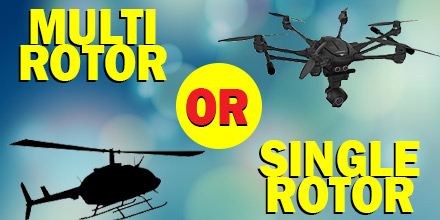 Although multi-rotor drones get most of the attention in the UAV world today, they’re not the only option for a flight project. But why would someone choose a multi-rotor over a single-rotor...or vice versa? Read on to learn the differences between the two, as well as their strengths and weaknesses.
A key difference between the two, not surprisingly, is the number of rotors each offers. A multi-rotor aerial vehicle has several rotors that keep it airborne. In contrast, a single-rotor vehicle has one rotor plus a tail rotor to control its heading.
Although multi-rotor drones get most of the attention in the UAV world today, they’re not the only option for a flight project. But why would someone choose a multi-rotor over a single-rotor...or vice versa? Read on to learn the differences between the two, as well as their strengths and weaknesses.
A key difference between the two, not surprisingly, is the number of rotors each offers. A multi-rotor aerial vehicle has several rotors that keep it airborne. In contrast, a single-rotor vehicle has one rotor plus a tail rotor to control its heading.
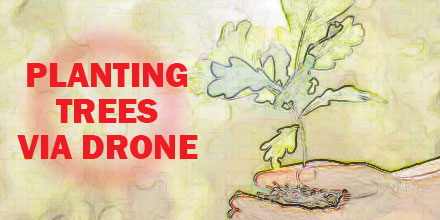 A former NASA engineer is harnessing the potential of drone technology for a very ambitious project.
The project? Ecosystem restoration.
More precisely, scaling reforestation projects to a size previously unimaginable.
The goal? Plant 1 billion trees every year...via drone.
Lauren Fletcher spent 20 years at NASA as an engineer before founding BioCarbon Engineering. The startup's entire focus is reforestation. More precisely, reforestation via the use of drones.
BioCarbon Engineering plans to combat deforestation and restore global forests with a unique solution. Their platform takes the best data available and enables local specialists to restore their landscapes both quickly and affordably.
A former NASA engineer is harnessing the potential of drone technology for a very ambitious project.
The project? Ecosystem restoration.
More precisely, scaling reforestation projects to a size previously unimaginable.
The goal? Plant 1 billion trees every year...via drone.
Lauren Fletcher spent 20 years at NASA as an engineer before founding BioCarbon Engineering. The startup's entire focus is reforestation. More precisely, reforestation via the use of drones.
BioCarbon Engineering plans to combat deforestation and restore global forests with a unique solution. Their platform takes the best data available and enables local specialists to restore their landscapes both quickly and affordably.
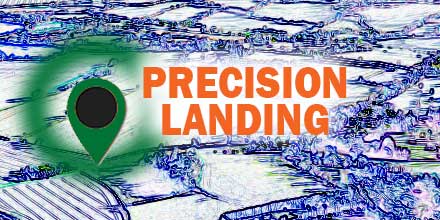 MicroPilot recently announced the successful interface of SightLine Applications’ landing assist functionality with MicroPilot’s autopilots.
This new functionality gives integrators the option of a robust landing assist feature. As such, it helps reduce operator workload and training requirements. This feature rolls out in version 3.7.1016 of MicroPilot’s HORIZONmp software.
MicroPilot recently announced the successful interface of SightLine Applications’ landing assist functionality with MicroPilot’s autopilots.
This new functionality gives integrators the option of a robust landing assist feature. As such, it helps reduce operator workload and training requirements. This feature rolls out in version 3.7.1016 of MicroPilot’s HORIZONmp software.
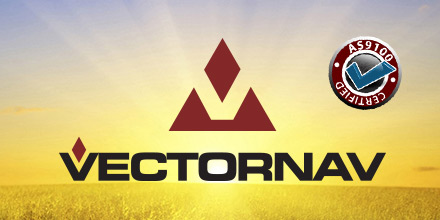 VectorNav Technologies announced it received accreditation for the AS9100 Rev. D international aerospace standard for its Dallas, Texas headquarters.
AS9100 is a set of quality requirements established by the aerospace industry to satisfy DOD, NASA and FAA quality requirements. These quality requirements are based on ISO 9001 standards.
“Earning the AS9100 designation for our Dallas facility demonstrates we are a highly capable supplier to the aerospace industry. Operating to the highest standards of quality is a core principle for us," said Scott MacDonald, Process and Quality Engineer at VectorNav. "This certification reflects our continued commitment to ensure our processes and systems deliver products and services that exceed our customers’ quality, cost, and speed expectations.”
VectorNav Technologies announced it received accreditation for the AS9100 Rev. D international aerospace standard for its Dallas, Texas headquarters.
AS9100 is a set of quality requirements established by the aerospace industry to satisfy DOD, NASA and FAA quality requirements. These quality requirements are based on ISO 9001 standards.
“Earning the AS9100 designation for our Dallas facility demonstrates we are a highly capable supplier to the aerospace industry. Operating to the highest standards of quality is a core principle for us," said Scott MacDonald, Process and Quality Engineer at VectorNav. "This certification reflects our continued commitment to ensure our processes and systems deliver products and services that exceed our customers’ quality, cost, and speed expectations.”
